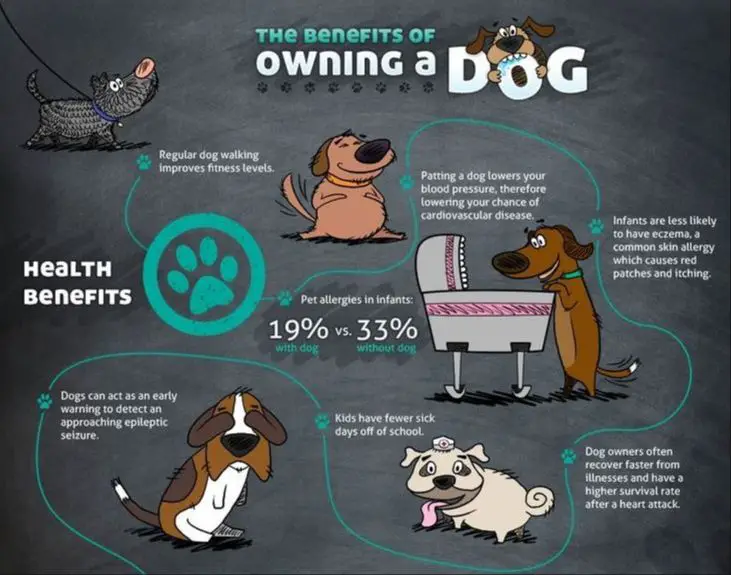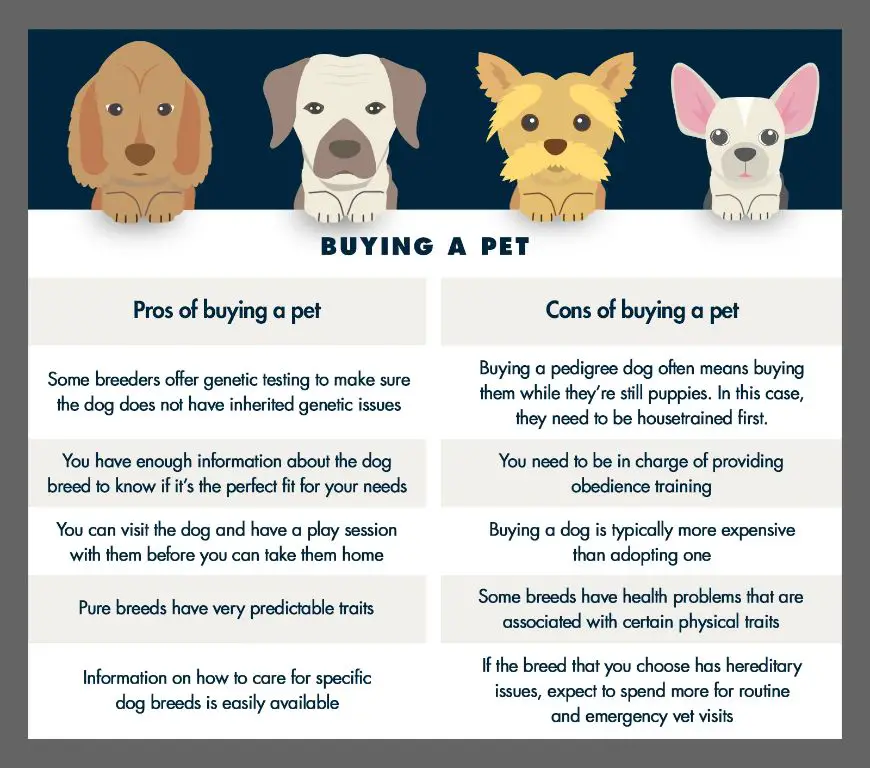The Benefits of Dog Ownership

One of the biggest benefits of dog ownership is the companionship, love, and affection a dog provides. Studies show that owning a pet can help reduce feelings of loneliness and isolation. According to a 2022 study published in the Journal of Applied Animal Welfare Science, dog ownership was associated with lower levels of loneliness (Merkouri, 2022). Dogs provide a source of friendship and are happy to spend time with their owners.
Having a dog also encourages more exercise and outdoor activities. Dog owners tend to be more physically active as they walk and play with their pets daily. Taking your dog for regular walks and going to the dog park provides a consistent opportunity to be active and enjoy the outdoors.
Caring for a dog also provides a sense of routine and responsibility. Feeding, grooming, training and socializing a dog gives pet owners a rewarding purpose. Having to care for another living being can provide motivation and a sense of fulfillment.
Additionally, dogs can help relieve stress and provide comfort and unconditional support. Petting and interacting with dogs has been shown to reduce cortisol levels and lower blood pressure. The companionship of a dog can have therapeutic effects and serve as a source of comfort during difficult times (Scoresby & Borrego, 2021).
Potential Drawbacks of Dog Ownership

While dogs can bring great joy and fulfillment to their owners, there are also some potential drawbacks to consider before getting a dog. Some of the main cons of dog ownership include:
Financial commitment – Dogs can be expensive. Costs mount up for food, medical care, supplies and equipment. Routine and emergency vet visits can be costly, especially for breeds prone to certain health conditions. Annual costs for food, medical care, licenses and basic supplies often range from $500 to over $1000 per year (Source).
Time commitment – Dogs require significant time for training, exercise, care and socialization. They need to be fed, walked, played with and given attention daily. Leaving dogs alone for long periods can lead to behavioral issues. Hiring dog walkers or sitters adds to costs (Source).
Limitations on travel/social life – Finding care for dogs while traveling can be challenging. Kennels and pet sitters cost extra. Dogs cannot be left alone for long periods. This can limit flexibility and spontaneity (Source).
Property damage – Poorly trained puppies can damage household items and furniture. Some dogs are prone to chewing, scratching, digging up yards, etc. These behaviors may require training and supervision to correct.
Lifestyle Considerations

Before getting a dog, it’s important to carefully consider your lifestyle and daily routine to determine if you can realistically meet a dog’s needs. As pack animals, dogs crave daily interaction with their owners. The amount of time you can dedicate to exercising, training, and playing with your dog should be a top consideration.
Think about your typical day – do you work long hours away from home? Do you have the flexibility to come home over lunch to let your dog out? Dogs left alone for 8+ hours will likely develop behavior issues or anxiety. If your schedule requires long periods away, consider hiring a dog walker or looking into doggy daycares in your area. According to the Mayo Clinic (https://newsnetwork.mayoclinic.org/discussion/mayo-clinic-q-and-a-how-owning-pets-can-lead-to-a-healthier-lifestyle/), dog owners who walk their dogs regularly tend to get more physical activity.
The space you have available is another key factor. Dogs need room to play and exercise, especially larger breeds and high energy dogs. Apartment dwellers should consider smaller dogs or those with lower exercise needs. Be realistic about your energy level as well – puppies and high energy breeds require much more activity and attention.
Taking stock of your daily routine and making an honest assessment of how much time and energy you can commit will help determine if adding a dog to your life is feasible. The rewards of dog ownership come with significant responsibilities – be sure your lifestyle can accommodate a furry friend.
Costs of Dog Ownership
Bringing a dog into your home involves significant upfront and ongoing costs. Adoption fees at shelters and rescues typically range from $50-$500 depending on the dog’s age, breed, and health. Purchasing a dog from a breeder can cost $500-$2,000 or more. Supplies like leashes, crates, toys, beds, and bowls will likely cost $200-$500 initially.
Veterinary care is a major, recurring expense. Annual exams, core vaccines, preventatives like flea/tick and heartworm medication, and any illnesses or injuries can cost $500-$2,000 per year. Food and treats may cost $200-$900 per year depending on the dog’s size and diet. Altogether, estimates for the first year of dog ownership range from $1,000-$5,000, with most people spending an average of $1,500-$2,500.
The average total cost of owning a dog over its lifetime is approximately $20,000-30,000. Larger dogs that live longer cost more. However, the joy and companionship dogs provide make the costs worthwhile for many owners.
Breeds and Sizes
When choosing a breed, it’s important to consider energy level, space requirements, coat care, and trainability. Some breeds like Greyhounds are known as “45 mph couch potatoes” – they need a short intense burst of exercise but are very mellow indoors. Smaller dogs like Cavalier King Charles Spaniels can thrive in apartments. Herding breeds like Border Collies have high energy and focus and need more active lifestyles. Make sure to research breeds that match your lifestyle.
In smaller spaces, toy and small breeds under 25 lbs are best suited. According to the AKC, top apartment-friendly small breeds include: French Bulldog, Havanese, Maltese, Cavalier King Charles Spaniel, Pug, Bichon Frise, Greyhound, Bulldog, Boston Terrier, Chihuahua. Medium breeds up to 40 lbs can work with frequent walks. Large breeds over 50 lbs need more space to stretch out.
Some breeds like Poodles and Shihtzus require professional grooming. Long haired dogs like Collies, Golden Retrievers and Old English Sheepdogs need daily brushing to prevent matting. Short haired dogs have lower grooming needs overall. Be sure you can commit time for the coat care requirements of any breed you get.
Breeds like Labrador and Golden Retrievers are highly trainable and aim to please their owners. Independent thinkers like Shiba Inus can be more challenging. Herding breeds need mental stimulation through training and games. Make sure to pick a breed whose intelligence and trainability matches your experience level.
Adopting vs. Buying

There are good arguments on both sides of the adopting vs. buying debate. Adopting a rescue dog has several benefits:
Adopting is often more affordable than buying from a breeder. Adoption fees typically range from $50-$500, whereas breeders may charge $500-$3000 for a puppy. As the ASPCA notes, “Adopting a pet from an animal shelter is much less expensive than buying a pet at a pet store or through other sources” (Is It Better to Buy or Adopt a Dog?).
By adopting, you are providing a home to a dog in need. Millions of healthy, loving dogs are euthanized in shelters each year due to overcrowding and lack of space. Adoption helps address this crisis.
Mixed breed shelter dogs tend to have fewer health problems than some purebreds or “designer” breeds. They may have a lower risk for genetic conditions.
That said, there are some potential downsides to adopting. Shelters often have limited knowledge of a dog’s history and temperament. The dog may have past trauma or behavior issues you’re unaware of initially. With a reputable breeder, you can ask about the breeding dogs’ temperaments and health screenings. You’ll also likely get breed-specific advice on training and care.
If buying from a breeder, be sure to find one who health tests their dogs, breeds selectively for temperament, and cares about breed welfare rather than profits. Avoid pet stores and backyard breeders. The ASPCA recommends asking breeders lots of questions, meeting breeding dogs on site, and seeing clean facilities.
Both adoption and responsible breeding have merits. Consider your lifestyle, preferences, and ability to handle potential issues. With proper commitment, you can find a great dog through either adoption or a breeder.
Preparing Your Home
Before bringing your new puppy home, it’s important to spend time properly puppy-proofing your house. Puppies are naturally curious and will want to explore and chew everything in sight. Take some time to tour each room from a puppy’s perspective to identify potential hazards.
Keep all chewable items like shoes, children’s toys, remote controls, and cords out of reach. Use baby gates to block access to any rooms or areas you want to remain off limits. Designate a space like a closet or bathroom to store items that could pose a danger to your puppy if left out.
Set up designated spaces around your home for your puppy’s essentials like food and water bowls, crate, and toys. Having consistent areas for these things will help your puppy learn the layout of your home faster.
If you have a yard, establish a potty area with a surface like grass, pea gravel, or turf for your puppy to relieve themselves outside. Take your puppy to this area regularly to reinforce good potty habits from the start.
With some preparation, you can puppy-proof your home to keep your new furry friend safe while allowing them to comfortably explore their new surroundings.
Training and Socialization
Proper training and socialization are critical for raising a well-adjusted and obedient dog. Here are some key considerations:
Enrolling in obedience training classes provides structured lessons from professionals. According to Longwood Veterinary Center, classes teach dogs important skills like walking politely on a leash, waiting patiently, coming when called, and ignoring distractions.
Implementing effective house training techniques from the start prevents “accidents” in the home. The ASPCA recommends taking dogs out frequently and rewarding them for going in designated areas. Crates can be helpful for limiting access while house training. Clean accidents thoroughly with enzymatic cleaners to prevent re-soiling.
Socializing with people and other dogs is critical for a dog’s development and wellbeing. According to Reed Animal Hospital, socialization builds confidence, reduces fear and anxiety, improves physical and mental health, and teaches dogs how to react appropriately to stimuli.
Puppies especially need positive exposure to new things during the prime socialization window, which is generally 3-16 weeks old. But socialization should continue throughout a dog’s life through activities like dog parks, play dates, walks, and training classes.
Travel Considerations
Traveling with your dog requires some planning ahead. You have a few options when it comes to bringing your dog along or leaving them behind:
Bringing your dog involves restraints and costs. Many hotels allow dogs but charge pet fees and may have size limits. Long car rides will require stops for potty breaks every few hours1. Air travel involves fees, paperwork, and keeping your dog comfortable in cargo or under the seat. Traveling internationally involves vaccinations, paperwork, and quarantine requirements2.
Leaving your dog behind involves arranging care in advance. Options include boarding kennels starting around $25-50 per day3, hiring a pet sitter for $15-25 per 30 minute visit, or doggie daycare around $15-30 per day. Make sure whoever cares for your dog can handle their size, energy level, and any special needs.
Consider your lifestyle and how often you travel. Leaving a dog home alone for more than 4-6 hours isn’t ideal. If you travel frequently or for long periods, bringing your dog along may not be realistic.
Deciding if You’re Ready
Getting a dog is a major commitment that requires honestly assessing your responsibilities, time availability, and costs. The average lifespan of a dog is 10-15 years, so you need to evaluate if you can provide for a dog’s needs over the long-term.
Consider your family’s schedule and needs. Dogs require time for walks, play, training, grooming, and veterinary care. Are you and your family able to commit to providing daily exercise and attention? Do you have a stable housing situation that allows dogs? Is everyone in agreement about getting a dog?
Estimate both one-time and recurring dog costs like food, supplies, veterinary care, grooming, boarding, pet insurance, etc. An average dog costs $1,270-$2,115 in the first year and $700-$1,700 each following year according to ASPCA estimates. Are you financially prepared?
Take time to honestly assess if now is the right time to add a furry family member. While dogs provide great companionship, they require significant responsibility and care. Make sure you can fully commit before taking the plunge into dog ownership.
Use this thorough self-assessment to decide if you are truly ready for a 10-15 year commitment to a loyal canine companion.
